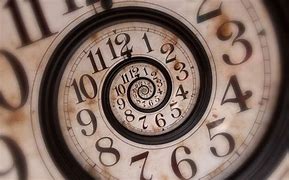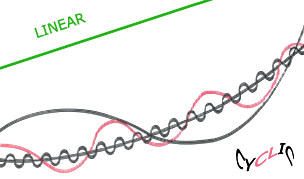Hello again.

Time and Change.
Just as time without change, change without time is not perceptible, recognizable.
We have become accustomed to interpreting time in a one-sided way: linear. Before that, it was natural to interpret time as you experience it in your immediate environment: cyclically. Think of the course of the day, the seasons and the dependent growing, blossoming, flourishing and passing of the experienced nature. Harvest is dependent on it. Our rhythm of life is dependent on it, apart from the unnatural to counternatural rhythms caused by technical inventions. We have forgotten that we are dependent on a cycle.
Time is the perceived form of the change: of the coming into being, becoming, flowing, passing away in the world and/or this itself together with all contents affected by it. The “objective” time, measured by the distances of the celestial bodies and other phenomena, is to be distinguished from the “subjective” time, which is based on the experienced time consciousness.
Only the “now” is “time and opportunity”; it lies between “too early” and “too late” and must be “perceived”, noticed, seized, so that something can be done at all. Past, present, future are abstractions of these concepts of time, in which the “too” is a sign for the worry character of dasein (cf. Martin Heidegger’s concept of “time”, “being”, “worry”, “dasein”). According to Heidegger, time is neither in the subject nor in the object, neither “inside” nor “outside”; it “is” earlier than any subjectivity and objectivity because it is the conditions of possibility itself for this “earlier”.
Reflect more on how you experience time and change(s) in everyday life.

 [/tab]
[/tab]